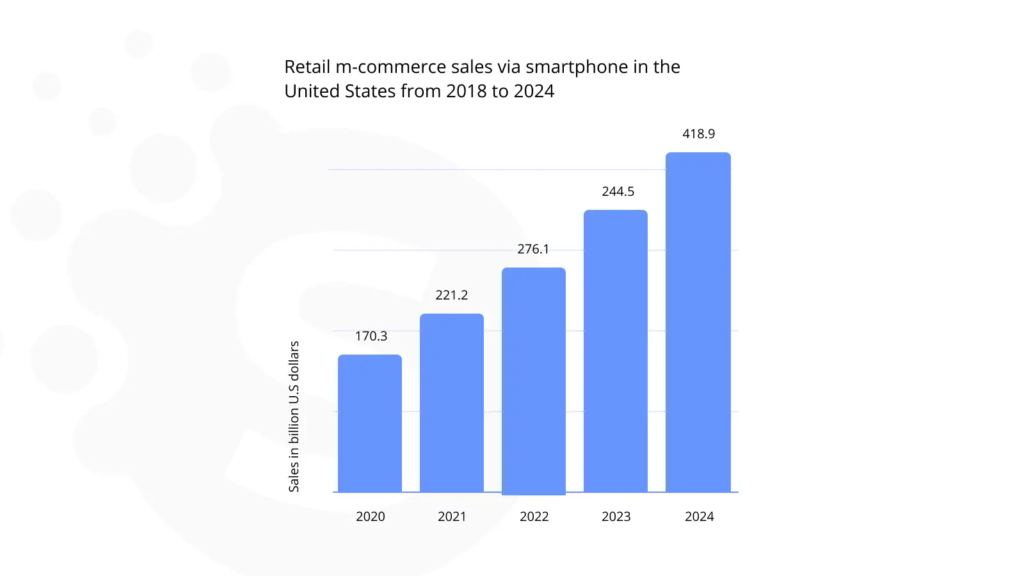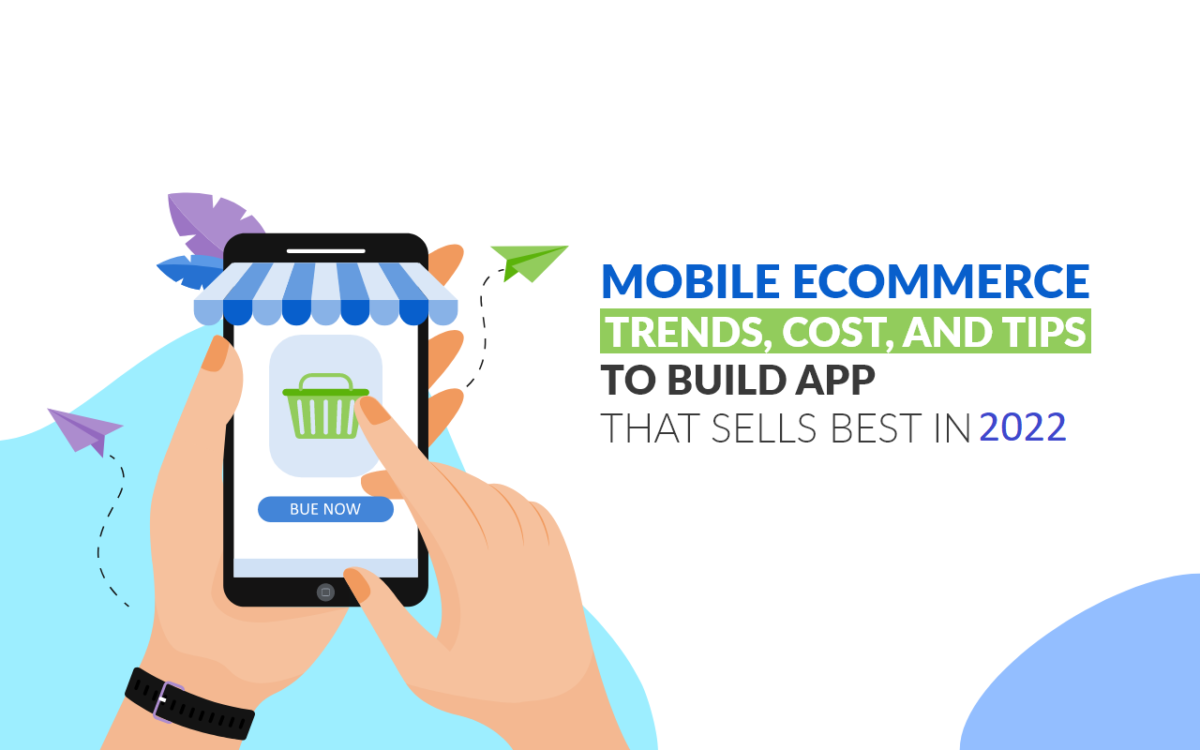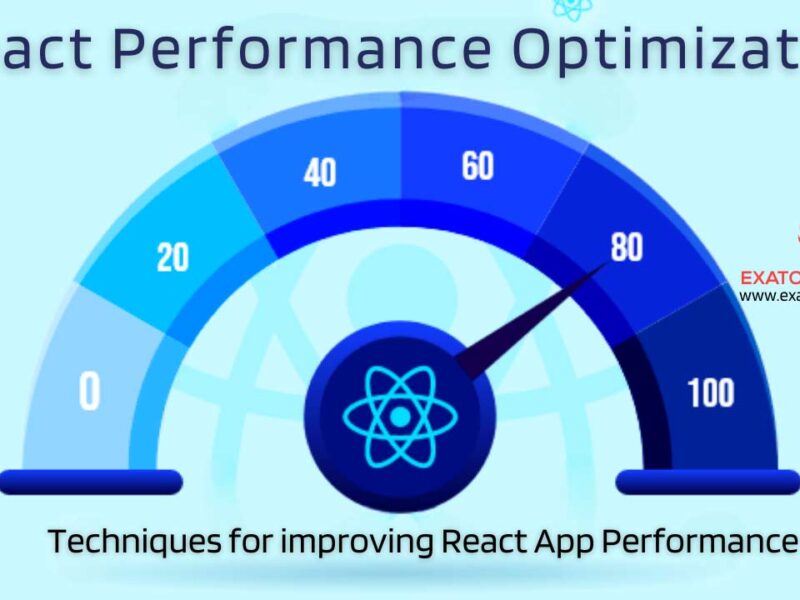E-Commerce refers to the trading and selling of commercial goods on Internet marketplaces. To purchase certain commodities and things, simply use your smartphone or tablet to conduct electronic transactions. Ecommerce app Solutions expanded, even more, fuelled by technological advancements, globalization, and people’s need for greater variety and a better shopping experience.
In today’s eCommerce economy, brick-and-mortar stores must give way to an online presence. This is when the eCommerce mobile app comes into play.
The Benefits of Creating an Ecommerce App
The market for eCommerce apps is massive. But, if you’re still not convinced that you need to create an eCommerce app, consider the following three arguments.
Smartphone Universe –
There are currently approximately 4 billion functional smartphones in the world. Most individuals complete online transactions with a single tap on their mobile devices 24 hours a day, seven days a week. Do you need another reason to create a mobile shopping app?

Increased Revenue –
Smartphones are much more than high-tech circuitry made up of electronic components. Many global eCommerce apps, such as Walmart and Amazon, have demonstrated effective mobile apps that attract buyers and boost revenue growth throughout all devices.
How to Create an Ecommerce Appin 8 Easy Steps?
Before we go further, let me offer you a full breakdown of the critical 8 stages to take while developing an eCommerce app.
Conduct research that is why we prioritized research. We undertake competition research and utilization cases, which are critical for assessing the behavior and trends of the target audience. It also aids in the selection of the best app platform and feature set for our intended audience.
Establish Your Objectives
Setting goals for your organization is the core of eCommerce app development. Here are three questions to ask to help you create your goals:
before settling on which technology to choose for eCommerce app development. Keep an eye here on development costs and inventory while choosing a CMS, database, and scalable framework.
With this information in hand, you can easily determine whether to create a Mobile Application Development on Android, an iOS platform or both. It suffices to say that you must target the mobile operating system on which your intended audience is active.
A good tech stack is essential for turning a smart idea into a successful product. A tech stack is a collection of components such as:
•Frontend (app interface);
•Backend (server processing);
•Developing (platform containing libraries and interface);
•Supporting (technologies that guarantee app security and performance).
For example, while constructing an
•What issues am I attempting to address?
•Who am I trying to market the goods to?
•How can I tell whether it’s a success?
Select the Best Platform
I recommend that you learn the ins & outs of considering the following when developing an Android eCommerce app:
•Java/Kotlin for Android;
•Application development technologies (Android Studio);
•UI Architecture (Jetpack Compose);
•Android UI
Consider the following when it came to iOS:
• IOS Android Developers Tools (XCode, AppCode);
• UI Frameworks; Computer Program (Objective-C or Swift);
• (UIKIt or SwiftUI).
The following programming tools are recommended for cross-platform apps
•Flutter (Dart);
•Xamarin (C#);
•React Native (JS).
Read our Comprehensive Overview of Mobile App Application Framework for additional information on the tech stack.
Define the Feature Set of your Ecommerce App Tech Stack

Because you already have customer input, expert judgment, trends, and the desire to outperform your competition, you now have a better understanding of what problems the product must tackle and which capabilities can satisfy them. You can utilize popular prioritization frameworks and tactics to assist you to select which product feature should be at the top of the list.
Design the UX and UI
As previously stated, the experiences in eCommerce applications have to go beyond in-person purchasing, and UX&UI design allows distinguishing. For your target customers, the design will be both voice and business identity. Color schemes, enticing images, and fast page transitions are what leave a good impression on your consumer.
Check explores our design concepts for various on-demand applications on Dribble for more inspiration:
•Nike Shopping application
•App for Food Delivery
•Taxi app on-demand
Create the MVP
Remember what I said about the product offerings that should be prioritized? At the MVP stage, you should concentrate on the most important elements of your eCommerce application. Instead of launching a full-fledged best product once, I recommend doing continuous product evaluations to fuel future revisions. MVP wants to uncover what users say of a product, shorten development time, decrease risks, and more efficiently manage resources.
Collect Feedback
Whenever the MVP is ready, it’s time to begin collecting customer feedback. It is the process of observing how users engage with your app, collecting feedback, and identifying potential changes. Feedback is important in e-commerce development apps since it allows you to determine what works and what doesn’t for your target audience.
Iterate last but not least
Finally, but not least, and so on. Looking at the top companies in the eCommerce AppStore, we could see that design is seldom consistent. Instead, it is continually changing and reacting to market and customer demands.
Three Things to Consider When Developing an Ecommerce App
There are always constraints in the development of an application that requires specific consideration. E-commerce app development is no exception. Here are some things to think about when creating an eCommerce app:
Data Safety
When users sign up to your eCommerce mobile website, the first thing they do is provide you with their personal information, such as their home address, credit card details, mobile phone number, and so on. Your people trust you, which is great news. However, you cannot let your clients down, therefore take precautions to secure their sensitive information from unlawful use. You can accomplish this by taking the following steps:
Make use of a private cloud. If you keep user content in the digital cloud, you must take the following precautions. Make certain that your provider offers a cloud-based regime; define access controls. Certain services, for example, are only available to premium membership customers. The alarm system. Even in a disaster, you are instantly alerted to the hazard and can take immediate action to mitigate the negative repercussions.
Scalability
To manage an ever-increasing number of users, your program must be scalable. It may appear that you should not consider app scalability at the start of eCommerce mobile application development. However, you must forecast your app’s growth at the start of development and prepare your app’s architecture.
Stability
Other factors that might dramatically reduce your app’s performance include instability and frequent crashes. Users, on the other hand, would not. Continue using an inconsistent and unbalanced app. To get performance stability in your app, you should:
Run QA tests;
• iterate the product;
• gather user input; and
• provide fixed updates.
How Much Would It Cost to Build an eCommerce App?
Finally, we arrived at the last section: the cost of Ecommerce app Solutions developing apps. This is a critical step for every entrepreneur since you must assess the budget, schedule the expenses, and determine whether the price is worth the candle. It is difficult to give realistic prices for mobile retail app development.
First and foremost, everything is determined by the aims and criteria. For instance, the number of features, handheld devices, UI/UX design complexity, and so on.
Second, the price varies depending on the place in which a software development firm is located in comparison, App Designer hourly prices in the United States and Canada start at $150, while costs in Western Europe range from $50 to $100. Eastern Europe has the best fares, ranging from $35 to $60.
The following are the benefits of e-commerce apps for businesses:
- Shopping online is the latest craze.
- Advantages for small and young businesses
•Easily attracts customers
•It gives you a competitive advantage.
•Aids in increasing sales - The millennial preference is for everything mobile.
- Improves client service
- Allows for offering customization – It is simple to establish a customer-focused business.
- All activities can be easily analyzed analytically.
- Allows for contactless payments
- More and better marketing
- It is simpler to establish and spread a brand.
- Customer loyalty is increased.
Extra benefits
Creating an environment in which customers may have a more personalized and responsive purchasing experience is certain to keep them. They will return and even promote the purchasing platform or application ahead of time for rewards such as loyalty & recommender benefits.
A big benefit that many business owners overlook is the ability to achieve various business objectives through various types of applications.
Understanding what type of application is required can be a positive step towards fulfilling the goal when releasing an app that can assist in accomplishing business goals such as better UX-UI, resulting in better consumer engagement and increased conversion.
Before discussing the technique to be adopted for e-commerce development apps, we will cover briefly the different sorts of apps that may be produced for different company aims and models in the section ahead.
Types of eCommerce Apps
Smartphone purchasing has propelled mobile e-commerce (m-commerce) to a platform that is showing to be a consistent propeller for enterprises. The success motto has opened up new avenues for enterprises to generate cash. Customers now have constant communication thanks to mobile applications. They can now access their favorite stores at any anytime to place orders.
The software that would support the operations will differ depending on the numerous models that exist inside the organizations. The apps, which are designed to achieve certain business goals, are distinguished by their features and functionalities.
What type of category you are in?
If you plan to start an eCommerce firm, you are likely to fall into one of four major categories:
•Business-to-Business (B2B)
•Business-to-Consumer (B2C)
•Consumer-to-Consumer (C2C)
•Consumer-to-Business (C2B)
There are, however, various types of models in use, and some businesses use a combination of two or more models. Choose an app type that permits the convenient exchanging of products and assets across the channel based on the sort of transactions planned as part of the company model. The application will be used to facilitate communication between the parties. The app must allow both the salesperson (offering entity) and the purchaser (receiving party) to accomplish their roles
B2B (Business-to-Business)
This category includes eCommerce App Applications that can facilitate business transactions through their interface. Goods and services can be exchanged over a mobile channel, which caters to huge transactions for large amounts of exchange.
Examples include Alibaba, Amazon Enterprise, and Quill, where businesses sell to retail, which then sells to consumers. As a result, the
products offered here may become raw materials or things for sale in other industries in the future.
B2C (Business-to-Consumer)
The applications created to support a B2C model would consume both the corporation and the end consumer of the product. The application channel is where sales take place. Such e-commerce apps include Amazon and Domino.
These applications offer immediate consumer access to all of a company’s products, however, retailers may limit supply and variety when working with many brands
C2B (Consumer-to-Business) eCommerce Application
Businesses are also interested in specialty domain offers such as information, design, & technical assets. C2B platforms such as Clutch and GitHub provide a place for people with expertise to showcase their expertise and establish such commercial ties.
Businesses create distinct benefits from such purchases and advocate for expanding the practice of sharing valuable talent through these channels.
C2C (Consumer-to-Consumer)
A C2C model operates through a mobile app when people exchange their products, offers, or services among themselves, without the involvement of any business or enterprise.
Applications such as OLX and eBay enable consumers who sell their goods to other people similar to themselves, to approve such sales and purchases, and enable communication between a larger user base such as the community
Other types of applications
eCommerce Ticketing Booking App –
These e-commerce apps allow users to book cabs, hotels, live entertainment, gaming, travel, corporate or social activities, and parties. The organizers use the application to share information about their event, and interested parties can purchase tickets or passes simply by paying through the online application. Examples of popular ticketing applications include Goibibo and Momondo. Other such e-commerce applications enable the direct exchange of such goods between event organizers, event administrators, and end consumers.
• App for eCommerce Aggregation –
The mobile apps that establish a link between the Aggregator e-commerce apps are used by end-users and service providers such as Walmart Inc. and Etsy Inc. They often provide a platform for service providers to publish their services, items, or goods, and customers can purchase or obtain them through the application interface. The application owners do not include the stated products, nor do they require any infrastructure setup, but rather spread the assistance of sellers who join this app to their business. Certain elements are common when designing an e-commerce app across the various categories listed above. These elements contribute to the application’s smooth operation.
Budgeting and Process Planning
Identifying or wishing to also include the features and functions in the eCommerce app would be a lengthy process, but matching the needs to the budget is an important consideration.
Integration and development planning must take the following factors into account:
•Yet if the app is customized or generic
•Whether developing a SaaS model or a one-time offering
•Various advantages and disadvantages of each type of app addiction
All of these aspects, when reviewed, will aid in determining a budget that is appropriate for the kind of e-commerce software being produced. The owners must ensure that even when selecting an agile software company for Android App Development, none of the following criteria are met. To ensure a comfortable business ROI, demands must go above and above budget estimations at any time.
App Release and Quality Testing
There will always be flaws, no matter how rigorous the Android App Development process is or how skilled the minds behind the planning are. mobile app development practices must include a thorough testing approach for loading, failure, device, performance, response, and usability.
The app is ready for release in the Play Shop after extensive testing. Optimize for both the iOS and Android app stores. Ensure that the team includes qualified testers who will generate suitable quality documents following the testing. These documents contribute to the app’s credibility when it is released in the Play Store.
Promoting the App
Marketing the app now that it has been released and is available for download and use The software and e-commerce business will help generate economic leads.
To promote the name of the e-commerce company, use SEO tools as well as a mixture of marketing methods such as content, social networks, and loyalty programs. To get the best out of Marketing tools include when the app has been developed.
This assists the app or even the company owner in launching marketing operations and developing the business to the point when a separate marketing staff can be formed. These procedures will undoubtedly improve the app development process’s quality and efficiency. The next step should be to improve and construct an iPhone App Development that fulfills current market quality and technology maturity standards



